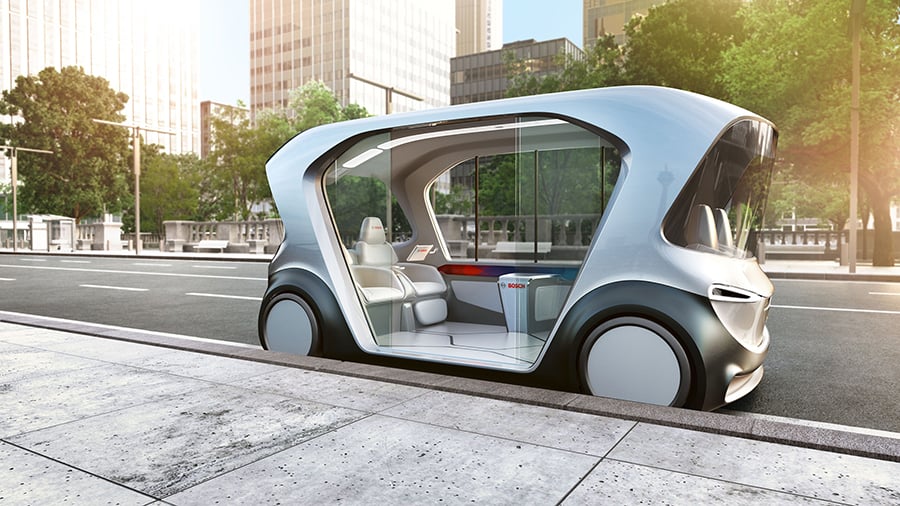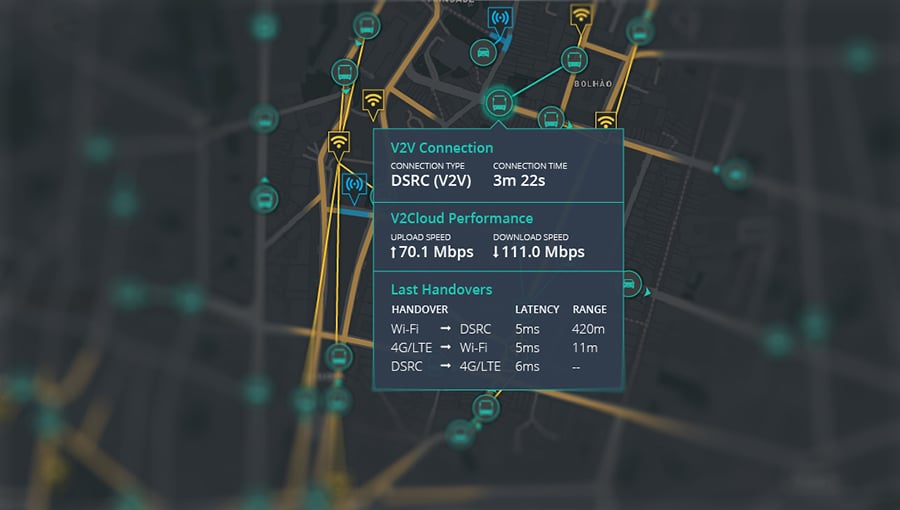
January 10, 2019
CES 2019: Why Architects and Designers Should Care About 5G Wireless
This forthcoming generation of cellular network promises to power a new wave of smart city and mobility technologies.

Yesterday, Metropolis reported how we can avoid a dark future of Autonomous Vehicles (AVs): If different transportation systems (AVs, bikeshares, buses, subways, etc.) learn to digitally coordinate multi-modal trips for users, then cities might finally break from automobile dependence. However, that future (and other smart city dreams) will rely on a complex-yet-invisible technology: 5G wireless.
5G is the next generation of cellular network, one that will (at its most basic level) enable cellular signals to carry far more data with greater speed and reliability. While that will mean faster data streams to your smartphone, the implementation of 5G networks will also serve as a tipping point for many mobility and smart city technologies. “5G is one of those enabling, transformative technologies,” said Davie Sweis, VP of global business and head of information technology at Bosch’s American division, at a CES panel today.

So what exactly makes 5G so revolutionary as compared to 3G or 4G? It’s a question of speed. “Urban mobility, smart cars, AVs—[for these] we need millisecond response times” that are also “ultra-reliable,” said Sweis. 5G can deliver a scenario where an AV is communicating with road sensors, stoplights, other AVs, even pedestrians and biker riders, making split-second navigation decisions that could avoid collisions or make trips faster. (Automotive manufacturers call this capability “V2X,” or vehicle-to-everything communication.) Future scenarios that involve seamless multi-modal trips—such as those Metropolis reported on yesterday—will probably rely on 5G.
5G equally applies to the Internet of Things (IoT) technologies that are slowly embedding themselves in the urban fabric. Cities are already testing sensors that track air quality, noise levels, temperature, and pedestrian activity—5G would be the platform those sensors use to relay their information. 5G could similarly enable sensors inside buildings that track energy usage, air flow, occupancy, and a host of other variables.

There is, however, one looming challenge: “Who’s going to be able to adopt 5G first? Typically, it will be those individuals who can afford it,” said Sherrell Dorsey, a tech journalist and social entrepreneur, at another CES panel. Rural or low-income communities will probably get 5G last, creating a “tech divide” that may last for years. Such a divide is no trivial matter. In communities that rely on smartphones as their main access to the internet, the delay may affect their access to information and services. It may also disadvantage rural or peripheral regions hoping to attract tech-focused businesses.
5G will start to appear in select cities this year as cellular providers install new antennas, modems, and software. Widespread 5G coverage will be a reality by approximately 2025 at the latest, according to some estimates. While technical hurdles remain, the biggest challenge will certainly be ensuring that 5G’s deployment doesn’t exacerbate data privacy woes or default to serving already well-served communities. “We’re going to have to get ahead of that,” concluded Dorsey.
You may also enjoy “CES 2019: Avoiding a Dark Future of Autonomous Vehicles.”










